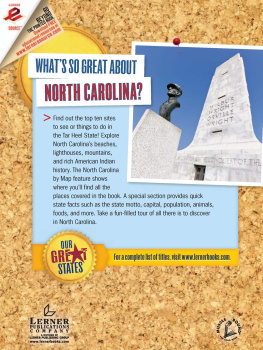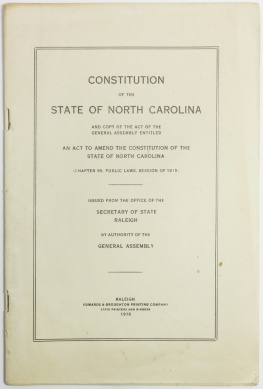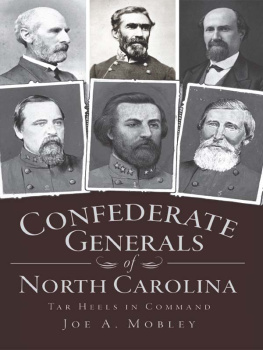Along
the
River
Road

Third Edition
Along
the
River
Road
Past and
Present on
Louisianas
Historic
Byway
MARY ANN STERNBERG
 Louisiana State University Press Baton Rouge
Louisiana State University Press Baton Rouge
Published by Louisiana State University Press
Copyright 1996 by Louisiana State University Press
New material 2001 by Louisiana State University Press
All rights reserved
Manufactured in the United States of America
Revised and Expanded Edition, 2001
Third Edition, 2013
Designer: Laura Roubique Gleason
Typeface: Minion Pro
Printer and Binder: McNaughton & Gunn
Casebound Binder: Dekker Bookbinding
Frontispiece: Detail of Marie Adrien Persacs 1858 map of the lower Mississippi River, Courtesy Louisiana and Lower Mississippi Valley Collections, Hill Memorial Library, LSU
Library of Congress Cataloging-in-Publication Data
Sternberg, Mary Ann.
Along the River Road : past and present on Louisianas historic byway / Mary Ann Sternberg. Third edition.
pages cm
Includes bibliographical references and index.
ISBN 978-0-8071-2055-2 (cloth : alk. paper) ISBN 978-0-8071-5062-7 (pbk. : alk. paper) ISBN 978-0-8071-5063-4 (pdf) ISBN 978-0-8071-5064-1 (epub) ISBN 978-0-8071-5065-8 (mobi) 1. River Road (La.)History. 2. River Road (La.)History. 3. River Road (La.)Guidebooks. 4. Historic sitesLouisianaRiver RoadGuidebooks. 5. River Road (La.)History, Local. I. Title.
F377.R58S84 2013
976.3'3dc23
2012026510
The paper in this book meets the guidelines for permanence and durability of the Committee on Production Guidelines for Book Longevity of the Council on Library Resources. 
Contents

Acknowledgments
This is the third edition of Along the River Road and, you might ask, why bother?
Because much has happened and changed to this richly historic corridor since the revised edition was published in 2001, and I think it worthwhile to keep the book as up-to-date as possible. Of course, the River Road has always been a place of change, both for good and ill, so this edition simply offers an opportunity to make the contents more useful and relevant.
As I have done for each edition, I spent numerous hours doing archival research but also found people who live along the River Road and were willing to share insights and information. They helped make this third edition possible. Thank you to: Sid Marchand, Sandra Perkins, Elaine Grant, Shandria Smith, Dr. Claude Robertson, Patricia Elfer, Juanita Perrett, Norman Marmillion, Debra Mayhew, and Kevin Kelly.
I must also continue to acknowledge those who contributed to the two previous editions because Ive built on the assistance they gave me. These include: the late Tony Fama; Audrey Gravois; Dick Keller; the late Sis Webb; Eugene LeBlanc; Jeffrey Roux; Ann Wilkinson; Leonard Gray; Dennis Alonzo; Bethany Bultman; the late Mark T. Carleton; Glenn Timmons; Louisiana Division of Archeology; Louisiana Office of Historic Preservation; U.S. Army Corps of Engineers; H. Parrott Bacot; LSU Art Museum; the Foundation for Historical Louisiana; the late Robert Heck; Jay Edwards; Rebecca Saunders; Louisiana State Library; Hill Memorial Library, LSU; Louisiana Preservation Alliance; Dr. and Mrs. Robert Judice; Irene Tastet; Jo Ann Amort; Debra Purifoy Mayhew; Helne Crozat; Faye Russell; Stacy Ryan; Frances Peltier; O. J. Dupuy; the St. James Historical Society; the late Rose Marie Perilloux; the late Emily Guidry; Ronald Scioneaux; Lucy and Walter Landry; and Gwen Edwards.
And of course I am still beholden to Joan Oppenheim for the original inspiration to write this book; to Ron Boudreaux for riding the road with me and keeping me out of the ditches; and to Joanna, Katie, Jay, Stacey, and Josh, who are interested, encouraging, and loving.
Introduction
What exactly is the River Road?
Polite confusion reigns when distinguishing between the better known federal designation, the Great River Road (GRR), and our River Road. The former is not the subject of this book; it is a federally designated land route first conceived by the Mississippi River Parkway Commission in 1938 to offer travelers a broad view of the historic and cultural significance of the Mississippi River Valley. The GRR roughly traces the Mississippi River along much of its meandering 2,350 miles, from its Minnesota source to the last point of solid land south of New Orleans. In south Louisiana, it now includes large portions of our River Road, although it formally follows other highways away from the river.
Our River Road, as defined by this book, covers the approximately one hundred miles between New Orleans and Baton Rouge, through the parishes of St. Charles, St. John the Baptist, St. James, Ascension, Iberville, and bits of East and West Baton Rouge. (State tourism folks now define the complete River Road as following the Mississippi from the Louisiana-Arkansas border on the north to the last bit of highway at Venice, to the south.)
My definition is, I admit, arbitrary. I did not include New Orleans or most of Baton Rouge, the state capital, because they have each been the subject of so much excellent writing. I focus instead on the area from just above (north) of New Orleans upriver into East and West Baton Rouge parishes. The River Road can be best appreciated as a cultural parkway, a pair of undistinguished rural routesone on the east bank, one on the westwith the Mississippi River as its median, in which exists a fascinating aggregation of more than three hundred years of history, culture, tales, and lore. Layers of settlement by diverse peoplesIndian natives, French, Germans, black slaves from Africa and the West Indies, free people of color, Acadians, Spanish, Anglo-Americans, Italians, and many others were deposited like geological strata and melded together, creating a distinct and unusual culture.
One of the oddities of following the River Road on either bankin addition to them being narrow and pocked with potholes, often devoid of lane-striping, and seldom straightis the inconsistent, seemingly whimsical numbering system. Going upriver along the east-bank linear route, as you will do following the guide in this book, presents an almost continuous, levee-hugging hundred miles, with successive highway numbers that are: La. Highways 48, 628, 44, 942, 75, 141, and 327; its west-bank counterpart, heading downriver, is successively numbered La. 18, 20, 405, and 988. I found this not only confusing but may help explain why the River Road has an identity problem and has never been appreciated en tout as a whole.
Regardless of highway numbers, however, the River Road is, and always has been, defined by an intricate relationship with the river. The Mississippi was the reason for settlement; it linked and separated people, attracted and repelled them, provided a source of transportation, food, fuel, and irrigation, and served as an agent of changeincluding destruction and ruin. Today, thanks to the uniform levees, the river is less intrusive into the daily lives of River Road residents, but it is actually no less a force in the evolution of this place.
I have lived most of my life along this legendary corridor and chafe at its presentation as a Deep South stereotype of an antebellum plantation parade. To be sure, the alluring nineteenth-century mansions open to the public are remarkable attractions, each one with an individual history and flavor of its own, worth a visit and return. Some offer overnight accommodations and restaurant facilities, all of which are delightful.
Next page





 Louisiana State University Press Baton Rouge
Louisiana State University Press Baton Rouge
